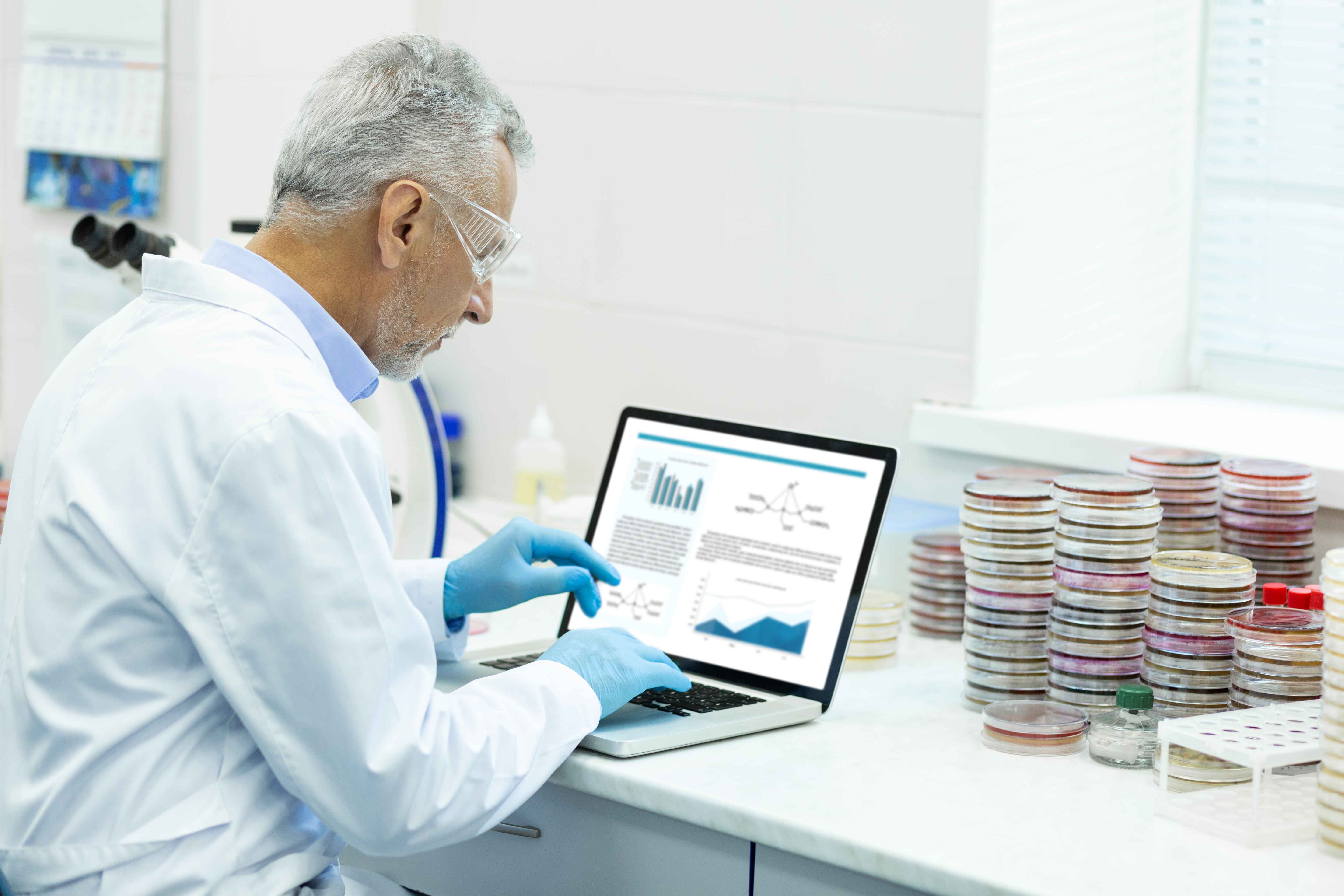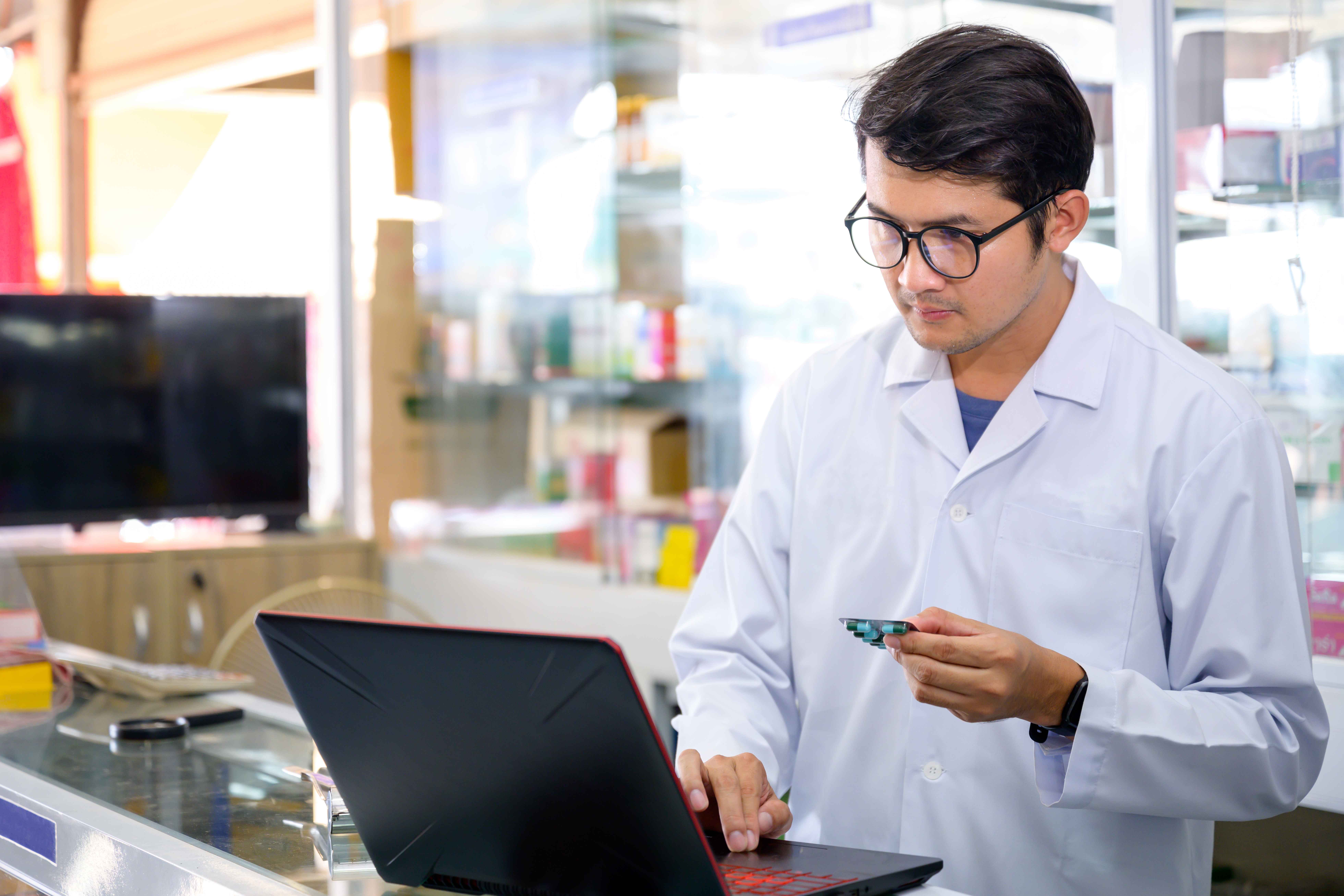Check our latest post!
Posted on 23/12/2022
7 Features of The Best Pharmacy Management Systems in 2023
The system can even provide pharmacists with enhanced customer service capabilities. So, if you're looking to improve your pharmacy management system, be sure to consider one of the best on the market.
By Manohar • 23/12/2022 • 9 min read
7 Features of The Best Pharmacy Management Systems in 2023

The pharmaceutical industry is one of the most regulated industries in the world, and managing a pharmacy can be a daunting task. With the advancement in technology, Best Pharmacy Management Systems (PMS) have become an essential part of every pharmacy. PMS is a software system designed to manage all aspects of a pharmacy's operations, including inventory management, prescription filling, and patient data management. In this blog post, we will discuss seven features that distinguish the best PMS from others. We will also talk about how PMS can improve workflows and help comply with HIPAA regulations. With real-time synchronization, EHR modules, and multi-store capability, you can streamline your workflow and enhance the overall efficiency of your pharmacy operation. Read on to find out more about how PMS can help you take your pharmacy business to new heights in 2023 and beyond!
What are pharmacy management systems?
Pharmacy management systems are software that assists pharmacies in managing their operations, including inventory, prescription tracking, and billing. These systems can be cloud-based or on-premises and can enhance efficiency, accuracy, and customer service in a pharmacy setting.
Why you need pharmacy management software
Pharmacy management software is essential in today's pharmacy. It can help you keep track of inventory, billing, and patient profiles. Additionally, it can automate many of the administrative tasks in the pharmacy, like ordering drugs and tracking inventory levels. The system can even provide pharmacists with enhanced customer service capabilities. So, if you're looking to improve your pharmacy management system, be sure to consider one of the best on the market.
Benefits of using a pharmacy management system
Pharmacy management system features provide several advantages. Efficiently managing pharmacy operations is possible with automation offered by PMS. Automating prescription refills allows pharmacists to concentrate on patient care. PMS plays a vital role in real-time inventory management by tracking stock levels and reordering medicines when required. Patient safety is improved by the system's ability to flag potential drug interactions and allergies while adhering to HIPAA regulations. It improves communication between healthcare providers through SMS or email alerts. Analytics modules generate insightful reports that enable pharmacy owners to make informed decisions. User management modules cater to multi-store or multi-location support while ensuring authentication with administrator users.
Benefits of using a multi-store and multi-location PMS
Pharmacy owners operating in multiple locations can benefit from incorporating a multi-store and multi-location support pharmacy management software system into their business strategy. This type of system offers valuable functionalities such as centralized inventory management across all locations, transferring prescriptions between stores, and streamlined reporting and analytics. Integration with Electronic Health Record (EHR) systems ensures seamless data exchange between healthcare providers, resulting in improved patient care and medication safety. Furthermore, utilizing an intuitive user-management module provides administrators authentication user access control over the right medicine prescribed to patients through text messages or email alerts for refill and expiry date notification. The use of such technology minimizes paperwork while ensuring real-time tracking of stock levels leading to better inventory management hence fewer chances of errors.
How to choose the right pharmacy management system?
Pharmacy management systems (PMS) are essential for pharmacist-owned pharmacies. They help pharmacies in a number of ways, including inventory management, pharmacy billing, pharmacy software updates, and more. It's important to choose a system that meets your specific needs and budget, as well as your pharmacy's current and future business needs. To help you make a wise decision, review the different features of various pharmacy management systems. Choose the one that best suits your pharmacy's needs and makes use of the latest pharmacy software technologies. Make sure you have the system's support available in case of any problems or questions. In the end, a pharmacy management system will help your pharmacy run more smoothly and efficiently, enhancing your pharmacy's reputation and bottom line.
Pharmacy management system features
A pharmacy management system (PMS) is a software system that helps pharmacists run their businesses more efficiently and effectively. A good pharmacy management system offers features like electronic prescription files, drug icons, and patient records tracking. It can help pharmacists manage inventory, track sales data, and generate reports to improve decision-making. So, if you're looking to improve your pharmacy's efficiency and management, make sure to consider a good pharmacy management system.
1. Inventory Management System
_11zon.jpg?alt=media&token=e22ba951-ba9b-4b5d-a02a-8b724f4cf546)
The pharmacy management system performs an audit trial. Moreover, it keeps track of the drug supply. The process also enhances the inventory yield ratio. Pharma owners can make data-driven decisions. Therefore, the software allows users to record stock levels and manage supplies. A unique dashboard controls the centralized Pharmacy Inventory Management. It connects ERP (Enterprise Resource Planning), online stores, and marketplaces. The management software links warehouses to the inventory system. It also adds products with varying SKU (Stock Keeping Unit) codes. The software involves minimal downtime for stocking inventory. Furthermore, Inventory management implies zero challenges for product availability. Users can add, update, and delete products in bulk. A well-managed stock system avoids gathering an excessive quantity of drugs. Pharmacies can keep records of the accurate measure of medications. It eliminates messy Excel sheets. The software provides complete transparency about stock availability.
2. Supply Management

Integration between wholesalers and pharmacies provides seamless orders. The pharmacy management system sets reorder for medications. Reordering informs about refilling the stock. Pharmacy POS also determines product performance. For reordering, the system offers schemes and discounts. Pharmacists can also stay notified and organized using a supply management system. At a time, the stock reaches the lowest level. The system allows reordering the product. Thus, it impacts profit margins and varies with the patient population. The system maintains automated demand and supply records for inventories. It is a strategic approach for better performance. The system determines resource sustainability. The pharmacist acquires the prescriptions. They later review it for suitable dosages. Hence, it is a unified platform for delivery, clinical procedures, and drug refills.
3. E-prescription

The pharmacy management system offers electronic prescriptions. They are generated using EHR (Electronic Health Record). E-prescriptions are user-friendly and eliminate paperwork. Additionally, they avoid confusion between patients and the pharma owners. E-prescription eliminates any errors while dispensing medicines. It also allows pharmacies to manage medication stock.
The E-prescription process makes pharmacy operations even more data-driven. The feature also retrieves data with a single click. The e-prescriptions are shared through SMS or emails. Besides, it provides real-time data by tracking a patient’s medical history. It manages multiple stores at a time. The system enhances team productivity and patient engagement. It is also cost-effective and provides hassle-free operations for pharmacies. Functions effectively for small and medium-sized pharmacies having less staff than before.
4. SMS & Notifications

The pharmacy management system tracks expiry dates for all medications. The system also automatically alerts the pharmacist about the expiration date. Instantly sends the notification when immediate medicine is needed. Patients receive the SMS after purchasing the next dosage. The features enhance patients’ safety. Moreover, it sends alerts about low inventory and restocking.
updates provide pharmacists to interact with patients. Push notifications and automated alerts improve customer satisfaction. Pharmacists are also informed if the patients demand a refill. Moreover, the attribute streamlines communication and enhances patient engagement. It also informs about inconsistencies in the patient’s record. Thus, the triggers could be adherence reminders or performance alerts.
Whether you are a retail pharmacy store or an optical store, most of the business functions and requirements are almost similar. However, it would be best if you use different POS software for different businesses as every business requirement is different. For example, if you are an optical store owner, then you must go with Optical Software. Similarly, for pharmacy, you must use a pharmacy management system.
5. Reports & Analytics

The pharmacy management system generates reports to check the wholesale performance. Reporting & analytics prepare for the pre-requirement of drugs. It also automatically manages the inventory. The feature calculates the number of needed medications. The reporting system enhances sales and ROI (Return on Investment). Moreover, it provides a full report of the pharma business activities.
Furthermore, the reporting feature prepares classified sales reports. They are also arranged category-wise and product-wise. The management system creates customized reports for marketing purposes. Thus, critical insights lead to decision-making. The data is also essential for monitoring & audits.
The system manages patients’ information and drug supply chains. Besides, Revenue reports improve sales and purchases. Reporting also helps to remain compliant and check anomalies in the system. The feature determines performance metrics and builds a budgeting roadmap. Hence, it enables us to obtain insights and detect suspicious patterns.
6. User Management

Another key feature in the pharmacy management system is the user management module. It allows pharmacies to restrict access across different user groups. The purpose behind implementing this module is that features can be reserved for users for effortless management. Authentication can be used in different conditions. In the case of the administrator user, the user can manage the listing of medicines, monitoring stocks, and other tasks.
Alternatively, in the case of administrator authentication users, the user can manage all processes, right from transactions to manipulating the medicine stocks and medical lists. Furthermore, this allows users to monitor activities and create accounts by utilizing the software.
7. Pharmacy Medical Billing

Medical Billing helps retail pharmacists document and bill for clinical services covered under a patient’s medical benefits plan. With a pharmacy management system, the ability to print labels and generate bills is vital for pharmacies. The system should be able to handle all aspects of POS (point-of-sale) systems, including printing labels and generating invoices. A lot of today’s software solutions have this capability built in as a part of their core functions. The billing module will also allow pharmacists to automatically calculate discounts, calculate maximum prices, and compare prices with other suppliers.
In most cases, the software will also be capable of taking payments via credit cards or electronic checks. In some instances, like a drug store chain with multiple locations or an independent pharmacy chain managing multiple sites, it is necessary for each location to have its own individual software solution.
Conclusion
The best pharmacy management systems are designed to increase efficiency, improve workflows, and save time for your pharmacy staff. With features like multi-store and multi-location capability, e-prescription management, and real-time synchronization, you can streamline your pharmacy operations and provide better patient care. Additionally, compliance with HIPAA regulations ensures data security and patient privacy. By investing in a user-friendly PMS app, you can make it easier for your staff to manage medication expiry and patient information in real time. The cost-effectiveness of PMS compared to traditional pharmacy practices makes it an excellent investment for long-term growth. Are you ready to take the leap into digital transformation with PMS? Contact us today to learn more about our top-of-the-line pharmacy management systems. We hope you find
this blog helpful in making the decision!